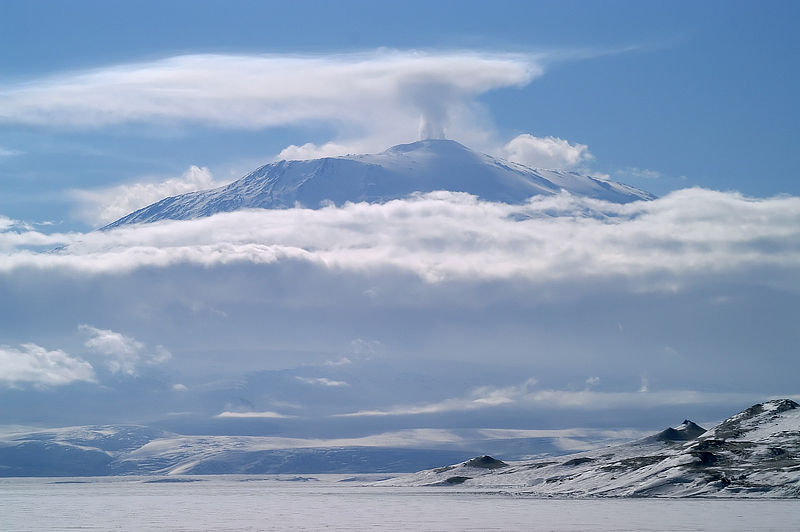

“Because it’s so clean down here, that stuff does get spread out, and Erebus does have an impact on the environment,” Kyle said. Where does the gas plume go? How does it affect the snow and ice? How long does the gas stay in the atmosphere? There are a number of questions the scientists want to answer about the effects of the gas plume, which issues non-stop from the volcano. “I think it’s likely that Erebus has some kind of regional impact on the atmosphere, possibly on the ozone, but it will be another year or two of modeling to discern that,” Oppenheimer said. (The scientists say the volcano has no effect on the ozone layer higher up in the stratosphere, where annual depletion caused by anthropogenic chemicals makes a hole form over the Antarctic around August.) He said current research suggests the perpetual output of certain Erebus gases such as bromine into the troposphere, the layer of atmosphere closest to the earth, could affect ozone. Oppenheimer said one challenge is to determine how big of a natural polluter Erebus is to the Antarctic environment. “We can see Erebus in the snow at South Pole,” Kyle said. The scientists believe trace amounts of these elements could be drifting at least as far as the South Pole, which sits at a fairly high altitude These include elements such as lead, arsenic and mercury. In addition, some of the elements in the volcano’s magma are very volatile and escape in a gas form. “The geochemistry of the gases is telling us something about the depth and the plumbing system and where those gases are coming from,” Oppenheimer said.


Oppenheimer said it’s likely that the source of these gas bubbles is far deeper in the volcano than the gas normally emitted from the lava lake. It turns out the proportion of carbon dioxide is much higher at the point of the explosion. Last year’s spike in activity also revealed a unique signature in the gas bubbles that exploded at the lake’s surface, according to Oppenheimer, speaking from the team’s hut outpost on the flanks of Erebus. “ putting out a gas of very unusual composition.” “I don’t think anyone’s measured levels of carbon monoxide that we’ve seen here,” Kyle said. The Antarctic volcano also emits a number of other gases in minute amounts including sulfur dioxide and carbon monoxide. Evaporated water and carbon dioxide comprise about 99 percent of the gas, approximately in even proportions, Kyle said. Like the lava boiling within Erebus, the makeup of the gases emitted from the volcano is also fairly uncommon. Using an infrared spectrometer and other instruments, Oppenheimer has identified the composition of the ever-present gas plume that billows out of the volcano’s cone. That’s more the specialty of volcanologist Clive Oppenheimer, from the University of Cambridge, who is in his fourth straight field season on Erebus. Volcanologists are also interested in learning more about what comes out of the volcano to understand Erebus’ effects on the atmosphere and environment. The crater of Erebus contains one of only three permanant lakes of molten lava in the world, making it particuarly attractive for


 0 kommentar(er)
0 kommentar(er)
